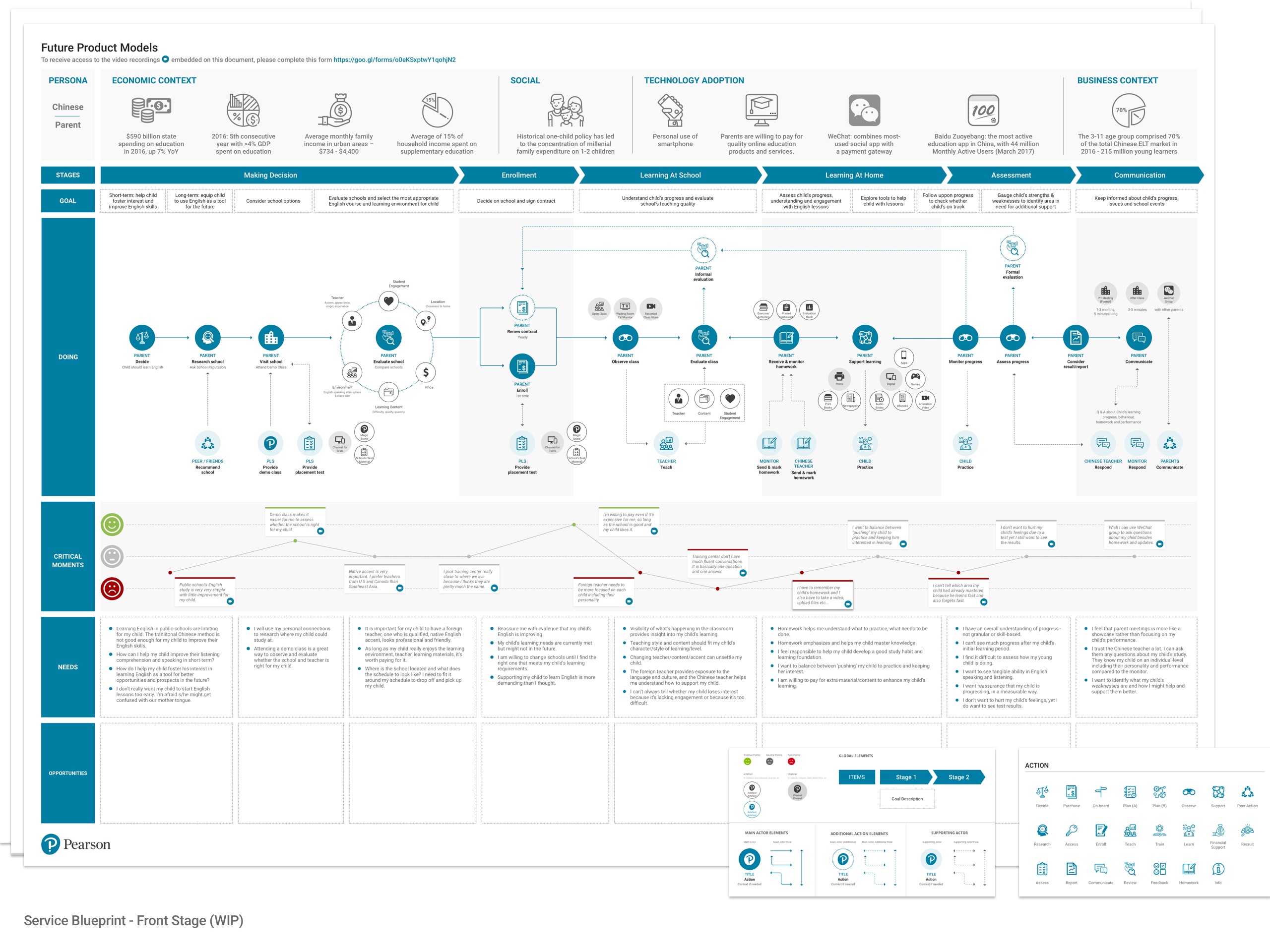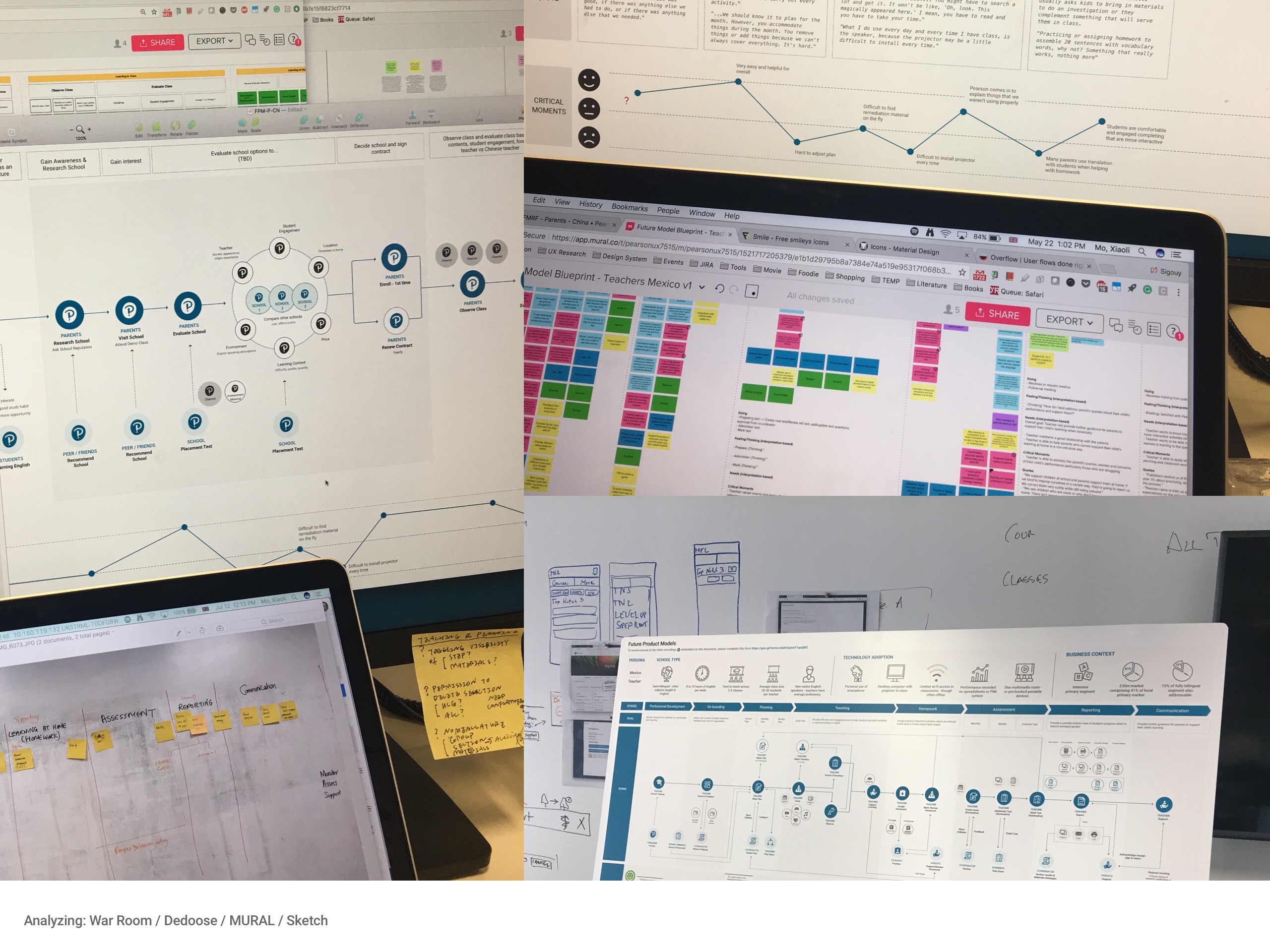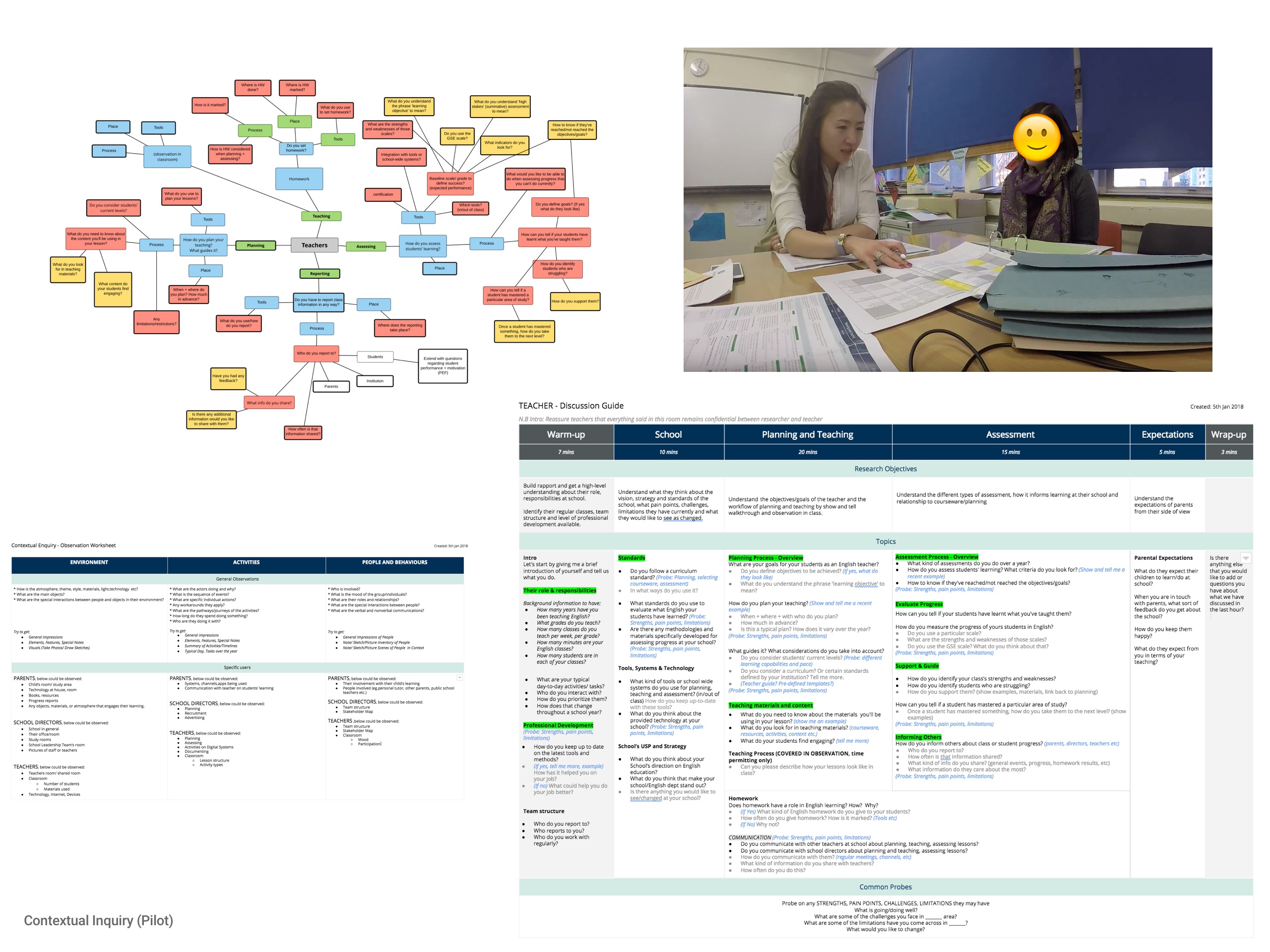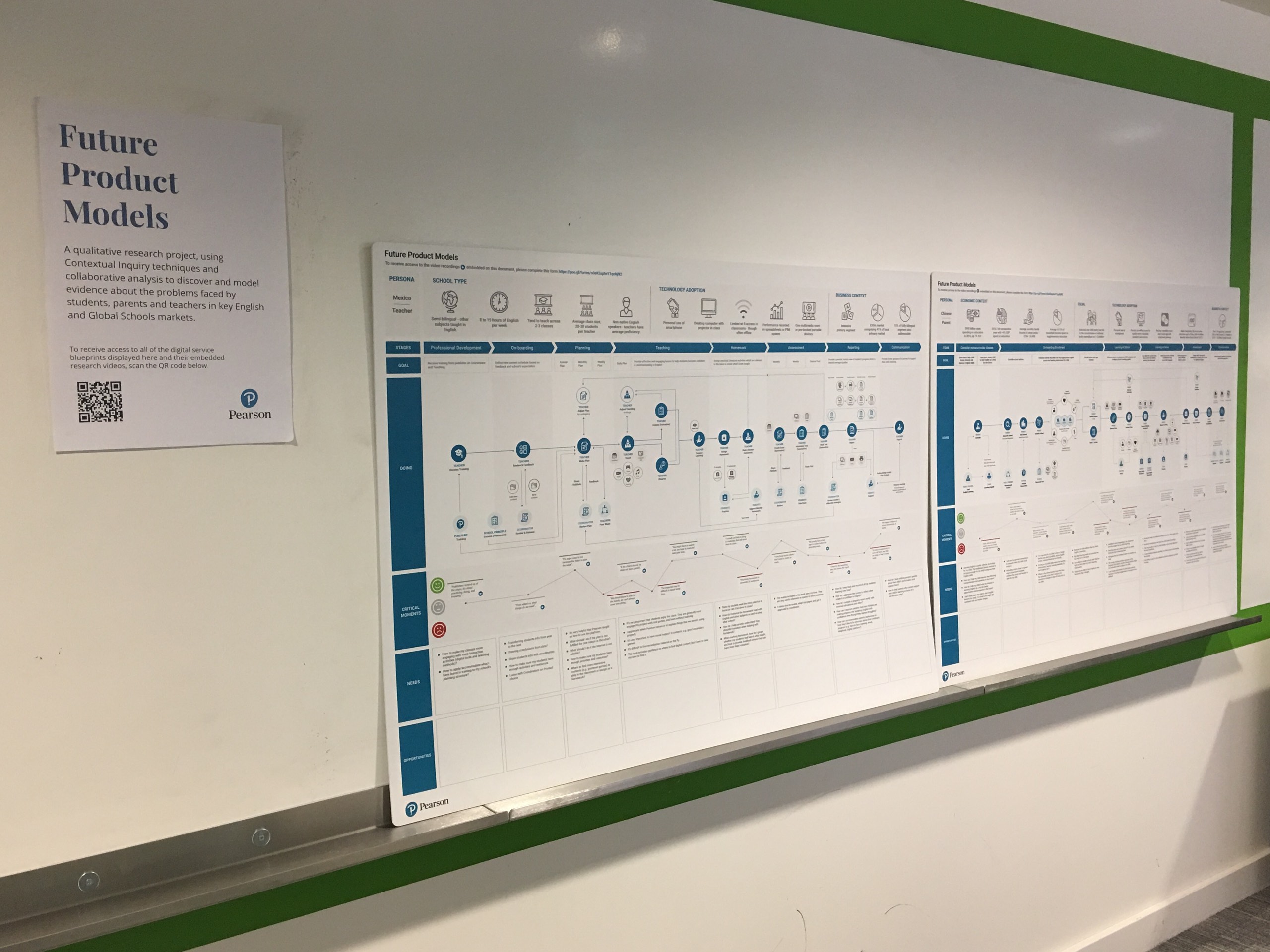
Further Product Model Research
Client: Pearson
User Research / Data Visualization / Service Blueprint
Obtaining a shared understanding of how service delivery results in the client’s experience.
Problem
How do we exceed our customer expectations of product experience and take a future-facing look at our courseware and assessment, powered by service and technology?
Objective
Apply user-centered research methodologies to explore, document, analyze and understand pain points, needs and existing support strategies employed by teachers, school directors and parents in relation to the use of English language learning courseware and assessment services for young learners, in key growth markets.
To approach customer needs and problems from a holistic, ‘bottom-up’ perspective, seeking to enrich the understanding of existing problem hypotheses, identifying and grounding our knowledge of previously unidentified gaps.
Stakeholder Workshop
- ? What is the relationship between coursework and assessment for students, teachers, parents and school directors? At which points do these domains currently integrate? At which points would a more integrated approach add value?
- ? What needs are not currently being met for users of existing English courseware and assessment solutions? How can we combine courseware and assessment capabilities, to best address the pain points of teachers, parents and school directors?
- ? What novel and commercially viable product or service value, particularly in the integration of courseware and assessment, for which customers will be willing to pay a premium?
With the above questions in mind, we initiated with a set of Topic Maps, Observation Worksheets for Contextual Inquiry which later were tailored into a series of Discussion Guides for our field studies carried out in China, Mexico and Turkey. All interviews undertaken in those markets were recored, transcribed, and then translated into English and distributed to all internal stakeholders within 2 weeks
In order to attain a shared understanding of user needs in relation to the teaching and supporting journeys of our customer, we then invited Global Schools & English Leadership, Global Product Leadership and Geography stakeholders to our London UX lab for a one day workshop of Customer Experience Mapping with our pre-defined stages of service map framework (e.g. decision-making, enrollment/on-boarding, planning, teaching, homework, assessment reporting, responding, and professional development etc). Several interesting discussion and feedback surfaced during the group activities, e.g.
- It was challenging to find “emotion” expressed within the interviews for the School Director group - as it was all rather factual, which caused a bit of confusion with the group at the point of having to uncover as one of the critical components of the Customer Experience Map.
- One stakeholder from Learning Intelligence was expecting to have more take-way on Professional Development but disappointingly found the result “too broad”. Hence more questions and discussions around “What drives good teaching?” - Should Professional Development focus more on “teaching how to following standards” or “teaching how to teach (in terms of pedagogy)”?
Output: Service BluePrints - Front Stage
At this stage I was leading the creation of service blueprints as accessible tools to bring together and align various perspectives that extends beyond the customer to include the experience of staff and business, in a visualization of how the current service works, and what will need to be in place for a future service version to be realized. By the time I left Pearson, we have completed the follow two steps to form the core of the front stage:
- Analyze raw data collected from qualitative studies in Mexico, China and Turkey. Turn sticky notes and categorized data set into MURAL board to further capture and fine-tune the elements for blueprints.
- Detail customer experience through the service as the core of current-states blueprints. Identify service patterns for each persona to drive experience consistency and alignment across different markets, and to balance the information density.
Thoughts
Socializing the field research is very important to raise the profile of UX in a global organization. E.g. providing access to video recordings of our legacy digital platforms and new designs being evaluated and being totally transparent about the design process, particularly in relation to evidence gathered, and sharing it as broadly and openly as possible. It’s almost impossible to overstate the power first-hand observation to demonstrate a design problem or solution to stakeholders. Positioning that learning in a constructive and solution-orientated way is vital.






